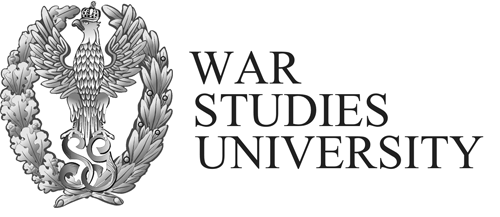On the eve of the Russo-Japanese war of 1904–1905, the Russian Quartermaster General Jakov Zhilinsky remarked: “The Japanese army undoubtedly still is in a far from ideal situation and cannot be compared in any way with the most important European armies, especially ours.” Zhilinsky could not have been more wrong in his assessment, as we now know, since Russian armed forces, both on land and at sea, suffered catastrophic defeats in the ensuing war against Japan. This anecdote is a striking illustra- tion of the fact that political and military leaders often gravely misjudge the strength of their own armies and consequently of their opponents, even on the eve of a major war. It can be found in Matthias Uhl’s newly published volume on the history of the GRU, the military intelligence organisation of the former USSR and today’s Russia.1
The GRU was traditionally an organisation about which very little was known, especially when compared with the KGB.2 A fair number of KGB officers defected to the West during the Cold War, where they were extensively debriefed and often wrote memoirs. Defections from the GRU were far fewer in number, and its officers rarely wrote memoirs (Haslam, 2015, pp. 283–285).3 Consequently, very little information is available regard- ing the GRU in the public domain in Western countries. Among the exceptions are several works by Viktor Suvorov (real name: Vladimir Rezun), who defected to Britain in 1978 from Geneva where he was stationed as a major in Soviet military intelligence. He later wrote several books on the GRU that tended not to be very well-sourced and contained assertions that were often barely credible, if not verifiable.4 He alleges, for instance, in Inside the Aquarium (Suvorov, 1986) that Stalin allowed the Gestapo to execute German communists in the Moscow area from 1939 to 1941.
Uhl’s GRU is of a totally different order and magnitude. It is a monumental work in many respects. There is no other work on the GRU in a Western language that covers such a long period in the history of the organisation; it even includes a short overview of Russian military intelligence in the 19th century, beginning with the military campaign in 1812 against the invading Grande Armée. The book contains many valuable insights from Soviet intelligence history. The author confirms historical information contained in the existing literature, namely that Stalin preferred to deal with “raw” intelligence person- ally. According to Uhl, during World War II, an analytical unit was set up at the GRU, but its impact was negligible, since it was far too small to handle the flood of incoming information. There was no central authority during Stalin’s rule that evaluated all available intelligence on a particular topic and presented it in a coherent report to the top lead- ership. The situation under his successor wasn’t any better: both Stalin and his successor Nikita Khrushchev “acted as their own, ill-qualified intelligence analysts” (Andrew and Mitrokhin, 1999, pp. 240, 720).5 As is well known, Stalin ignored numerous warnings by his intelligence services, including the GRU, concerning the German attack of June 1941. The situation repeated itself about a year later, as Uhl explains in some detail. There was a debate inside Soviet leadership in early 1942 about the direction of the upcoming German summer offensive, whether it would go head-on against the capital Moscow or in a southern direction, to Stalingrad and the oil wells of the Caucasus. Despite ample information from his own intelligence services, again, including the GRU, the dictator held to his strong conviction that the attack would go against Moscow, and had certain sectors of the front reinforced accordingly. This proved to be a costly mistake, since Hitler had indeed Stalingrad and the Caucasus in the crosshairs, not Moscow.
Uhl notes that unlike the SVR,6 whose director reports directly to the Russian president on a weekly basis, the GRU is a directorate of the armed forces’ General Staff and reports to the chief of the General Staff and the minister of defence. The GRU chief does not have direct access to the president. Even though the author does not say so explicitly, this was probably the case for most of the Soviet period, when the GRU did not have direct access to the Party leadership either. However, despite lacking this direct access, the GRU at present plays a major role in Russia’s hybrid warfare against NATO countries. Its Unit 29155 is known for assassinations and attacks in multiple NATO countries and has reportedly targeted US government personnel—including CIA officers. Those targeted subsequently suffer from “Havana Syndrome,” which causes a range of unexplained health issues for victims (Weiss, Grozev, and Dobrokhotov, 2025).
Uhl’s GRU is thoroughly sourced, drawing extensively from Russian-language references. Despite lacking direct access to the GRU archive, Uhl obtained significant material from other Russian state archives and benefited from his strong connections with local histo- rians, whose works are frequently cited by him. His long-term residence in Moscow as a historian at the Deutsches Historisches Institut (German Historical Institute) facilitated these relationships, until the institute was forced to close following Russia’s large-scale invasion of Ukraine in February 2022.
One of Uhl’s contacts stands out: the historian Michail Boltunov, who authored numer- ous publications in Russia on the history of Soviet military intelligence. Many of them can be found in the notes and bibliography of this book. Also, Boltunov received docu- ments from the GRU archive on the case of the agent “Murat” and made those available to Matthias Uhl. Murat was the GRU cryptonym of the French air force officer Charles de Jurquet de la Salle d’Anfreville, who was an agent of Soviet military intelligence from 1958 to 1965 and handed the Russians many documents on NATO nuclear planning. Remarkably, after the GRU stopped communicating with him, Murat offered his services to Romanian intelligence and worked with them for a few years until his death by suicide in 1969 after his arrest by the French authorities. Practically nothing was known in the West about the fascinating case of this GRU star agent until the publication of Uhl’s GRU.7
The book offers remarkable details of the case. Murat gave the Russians many original NATO documents on nuclear planning, some of which were “Cosmic Top-Secret,” the NATO designation for content of the highest secret order. Some documents contained lists of thousands of targets, mostly in the USSR, that would be attacked with nuclear bombs in the event of war. Information about the calibre of atomic weapons to be used was also included. There were times when Murat handed over such documents to the GRU on a weekly basis. According to Uhl, many of these NATO plans are top-secret even to this day. There is more: We also read about Uhl also offers many details about internal GRU deliberations on the high quality and importance of the documents Murat handed over. No wonder then that in a secret meeting in Paris in summer 1962, Murat received the Order of Lenin, one of the highest Soviet awards.8 At a later stage, a proposal was even discussed within the GRU to give Murat the still higher distinction of Hero of the Soviet Union, which was not even given to a GRU top agent like Richard Sorge.9 In the end, the GRU leadership decided against giving Murat the award.
For some years during the operation with Murat, the GRU was in touch with him through an intermediary, a French woman with the cryptonym “Luisa,” who was herself an expe- rienced intelligence operative. Using this woman as a courier had the great advantage, of course, that Murat could avoid direct contact with Russian intelligence personnel. Uhl quotes an internal GRU document on Luisa in its entirety, in which her character and operational qualities are judged very positively. Part of the document characterises her as follows: “born 1925, belongs to no political party, supports progressive views and is strongly dedicated to the Soviet Union. She was recruited by military intelligence in July 1957 on ideological grounds.” In a development not uncommon in the intelligence world, the agent and the courier eventually became involved romantically. Unfortunately for the GRU, the two lovers they had a serious fall out at some point, which complicated the operation considerably for some time.
Matthias Uhl also provides detailed descriptions of the fair number of reorganisations the GRU experienced throughout its history. Even for the interested reader, these are not always easy to digest, but this is a minor point. The GRU is a key organisation within the Russian intelligence and security establishment, both past and present, and certainly deserves a thorough and well-sourced volume like this one.




